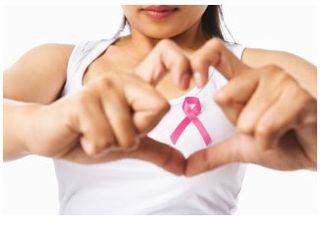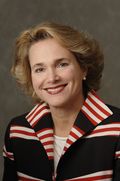Ah, the fabulouscolors of fall. A time when those of us inhabiting the more northern parts ofthe hemisphere are treated to a natural environment rich in russet, gold andburgundy hues. Then, come October: PINK. 
Thereare all the little ribbons, t-shirts and caps. There’s pink neon lights atopPhiladelphia’s tallest skyscrapers. And for one whole month every season, profootball players – those hardened gladiators of the gridiron – are sporting hotpink footwear and gloves. (No pale pink for those guys!) Did you know there iseven a whole website solelydedicated to turning “the internet Pink for Octoberin an effort to help bring attention to Breast Cancer Awareness Month”?
Thanks to theoriginal efforts of the Susan G.Komen for the Cure® and millions of other dedicated and generous folks, pink is now as synonymouswith the month of October as a jack-o-lantern, a truly universal symbol ofBreast Cancer Awareness Month.
So what has all this“pink awareness” gotten us?
There are benefits, for sure. According to
Komen,which was founded in 1982, the combined efforts poured into more research andawareness have led to: earlier detection and more effective treatments; asignificant rise in early stage breast cancer’s five-year survival rates; and anincrease of federal funds toward research, prevention and treatment – from $30million in 1982 to now over $850 million. But in all this national pink fervor,women must remember that while working to help the greater good is a wonderfulthing, they also need to remain aware and vigilant on a personal level.
According to the AmericanCancer Society (ACS) breast cancer is one of the most common cancers among Americanwomen (second only to skin cancers), affecting one in eight (12 percent) ofwomen in the U.S. Breast self-exams, clinical breast exams and mammograms arestill the best first lines of defense against breast cancer.
“Mammography,including digital mammography, remains the single best screening method for earlydetection of breast cancer,” said BrianS. Englander, MD,director of the Women’s Imaging Center at Pennsylvania Hospital.“Althoughnew modalities play important roles, the best research has consistentlydemonstrated the importance of annual mammography for breast cancer screening.”
Thanks to more research and improved technology, women don’t need to fear annualmammograms. “Recentresearch has found that the risk from exposure to mammogram radiation is evenlower than previously thought, said DahliaSataloff, MD, director of the IntegratedBreast Center at Pennsylvania Hosiptal andvice chair of the Department of Surgery. “The newer digital mammograms useabout 21 percent less radiation than traditional film mammography. They alsotake sharper pictures, so there’s less of a chance that you’ll get called backfor a repeat test.”
It also helps if awoman can gauge her risk for breast cancer. Obesity, especially aftermenopause, is a clear risk as body fat is a significant source of the hormoneestrogen – a known contributing factor in causing breast cancer. Recent studiesalso suggest that highly fit women are less likely to die from breast cancer theirless fit counterparts.
Diet can also affectbreast cancer risk. Even moderate alcohol consumption (two to three drinks aweek) can increase a woman’s risk while two or more drinks a day can increase risk up to 25 percent. Soy supplements can alsoincrease risk since they contain concentrated doses and mimic estrogen in thebody. Good news for all you vegetarians out there though: soy foods themselves, like tofu, edamame andsoy milk, do not increase risk.
“Many factorscontribute to a woman’s risk of breast cancer – environmental, behavioral,genetic – the important thing is to be proactive. Visit your gynecologistregularly and discuss all these factors with him or her so you can determinewhen and how often you should be screened,” said Dr. Sataloff.
If caught early,breast cancer has a more than 90 percent survival rate in the U.S. Part ofprevention, in addition to diet, exercise and regular screenings, is knowingyour family’s history and possible genetic risk. While family history isn’teverything, it can play a large role, especially in families where people carrytheBRCA1 or BRCA2 gene mutations. Even having a father or brother with coloncancer can raise a woman’s risk of breast cancer as it signifies possible BRCA1or 2 mutations. Physicians and scientists in Penn’s new Basser ResearchCenter for BRCA are focused specifically on the treatment andprevention of cancers associated with these hereditary mutations. But those genesdon’t only impact women – men carry them, too, and that’s an important point tomake during all this pink mania: men can also develop breast cancer.
According to theACS, as far as the symptoms of breast cancer go, men and women both need tolook for irregularities and changes in their breasts including swelling, lumps,skin irritation or dimpling, breast or nipple pain, nipple retraction, redness,scaliness or thickening of the nipple or breast skin and nipple discharge.
So this October, beinformed, be proactive and do your own part to “be aware” this Breast CancerAwareness Month. Change some bad habits to good, see your doctor, get screenedand go ahead – wear pink and wear it proud. While it may have become more of afashion statement than ever originally intended, it’s safe to say that as faras breast cancer is concerned: pink, it does a body good.